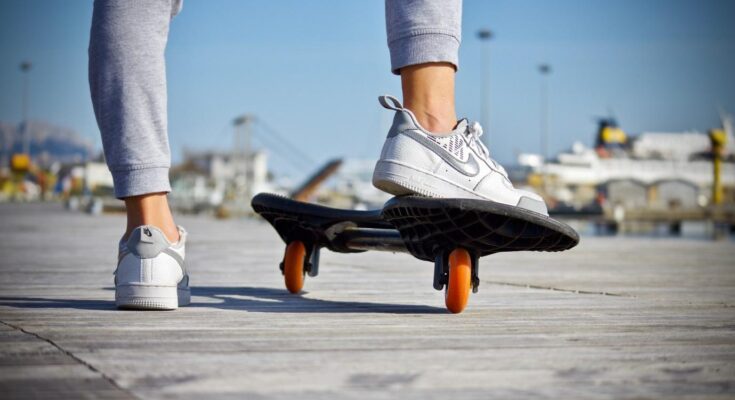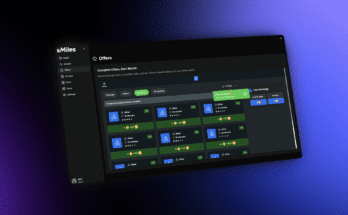It also just looks really cool, doesn’t it?
Every day, more and more people are discovering the joys of skateboarding. It’s a fun and exhilarating outlet that allows a person to keep active while honing their reflexes and boosting their confidence.
But how long does it take to learn to skateboard? And how can you be sure you’re really ready to take the first step and head down the slippery slope toward becoming a skateboarder?
Here, we’ll look at all you need to know about becoming a skateboarder.
Month 0-1
Month 0-1 is the ideal time to start learning how to skateboard. There are many people who have learned how to skateboard in the span of a month, but there are other people who might take much longer.
It all depends on how much time someone puts into it. It usually takes a few weeks of practice to learn how to get off the ground, control the skateboard, and learn different tricks.
It also depends on how comfortable someone is with taking risks and attempting new tricks. With dedication, focus, and practice, someone can become a competent skateboarder by Month 0-1.
It may help to have a beginner’s skateboard with larger, softer wheels to make it easier to balance and keep the feet from slipping off the board. With the right attitude and commitment to the craft, it is possible to learn to skateboard in a month.
Month 2-4
Month 2-4 of learning to skateboard brings an exciting time for any skateboarder. After months of hard work, dedication, and practice, one should have a solid foundation for mastering the basics of skateboarding.
As the skills develop and get more refined, the skateboarder can start to add more complex tricks, take on larger transitions and link bigger sequences together.
Month 2-4 is a great opportunity to take on bold challenges with the confidence of knowing the fundamentals and continuing to practice. The months prior will have paid off, and it is time to show off the improved skillset on the skateboard. With guidance, patience, and practice, Months 2-4 can be a rewarding process for the skateboarder.
Month 5-8
Month 5-8 marks the time when real progress in skateboarding becomes possible. By this point, the skateboarder has developed the necessary skills to become proficient at riding ramps, performing stunts, and cruises.
It’s time to take it to the next level and start competing. The skater is now comfortable pushing his/her limits and is even starting to develop his/her own style of skating. New techniques, such as sliding and flipping, can be incorporated into their riding.
It may take some time to perfect them, but the skills have been developed to do so. By months 5-8, the skateboarder is ready to go out and show the world what he/she is capable of doing on the board.
Month 9-12
Month 9-12 is a term referred to as the amount of time a skater has been on the board. After nine months and twelve weeks, beginner skater is likely to have gained the confidence and knowledge needed to take their skating to the next level.
Skateboarding is a skill that takes practice and commitment to master. Professional-level skaters often spend hours a day working on new tricks and honing their abilities.
Beginner skaters should focus on basic tricks, such as basic ollies, board slides, and basic grabs, and on familiarizing themselves with the basics of riding their boards. After a few months of practice, skaters should expect to be able to skate with confidence.
However, it should be noted that skateboarding is a lifelong journey, and some skateboarders take up to two to three years to truly consider themselves to be proficient.
1 Year+
Learning to skateboard takes time and dedication, no matter the age. While it is possible to learn the basics in 1 year, mastering the sport can take much longer. Regular practice and dedication to honing individual skills, such as grinds, flips, and Ollies, are important to skateboarding.
It’s important to be patient with yourself and remember that everyone learns at their own pace. Watching professional skateboarders can be helpful, but it’s important to recognize that what you see in videos is the end result of years of practice.
Finally, safety is important, so make sure to use proper protective gear. A year is an achievable goal if you practice frequently and focus on perfecting each skill.
Estimating How Long It Takes To Master Different Skateboard Maneuvers
Learning to skateboard is a process that can range anywhere from several days to years, depending on how much you practice and which skills you want to master. Basic skills such as pushing, turning, and balancing can be learned in a matter of days or weeks.
Tricks like kickflips, heel flips, and grinds can take slightly longer. Many beginner and intermediate tricks can be learned in a few months, but more advanced tricks require several months of practice before perfecting them.
Estimating how long it takes to master a skateboard maneuver depends on how quickly you can pick up the technique and the time you are willing to dedicate to practice. However, with diligence, commitment, and practice, it is possible to become proficient in a variety of skateboard maneuvers in a relatively short amount of time.
If you want to learn more about skateboarding, visit the BinkBro Blog.
Explore How Long Does It Take To Learn to Skateboard
Skateboarding is a great hobby that’s both fun and challenging. With dedication and practice, it’s usually possible to know how long does it take to learn to skateboard, anywhere from a few weeks to a few months.
Don’t be afraid to give it a try and start small with simple tricks.
Did you find this article helpful? Check out the rest of our blog for more!



